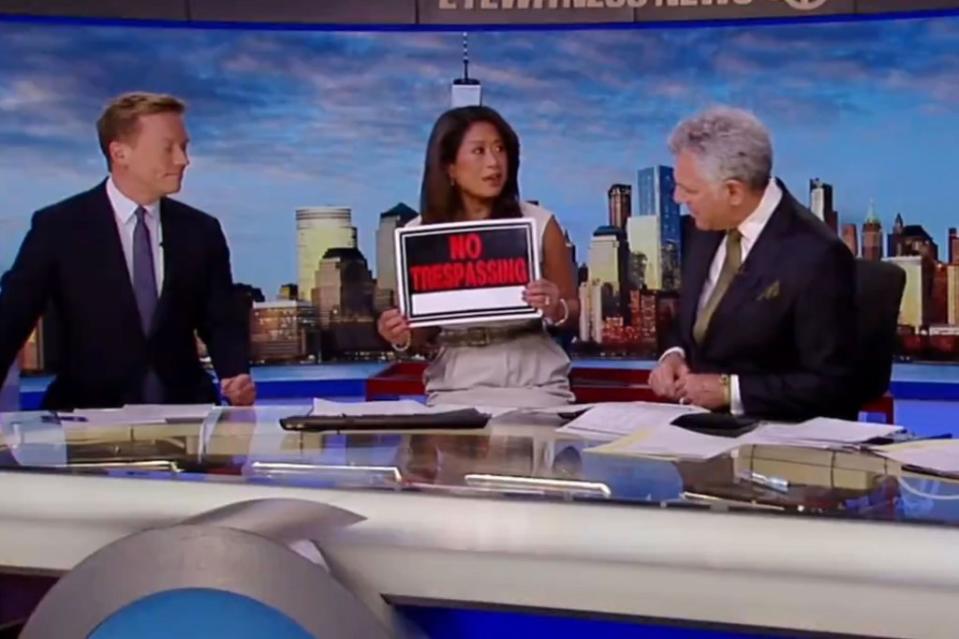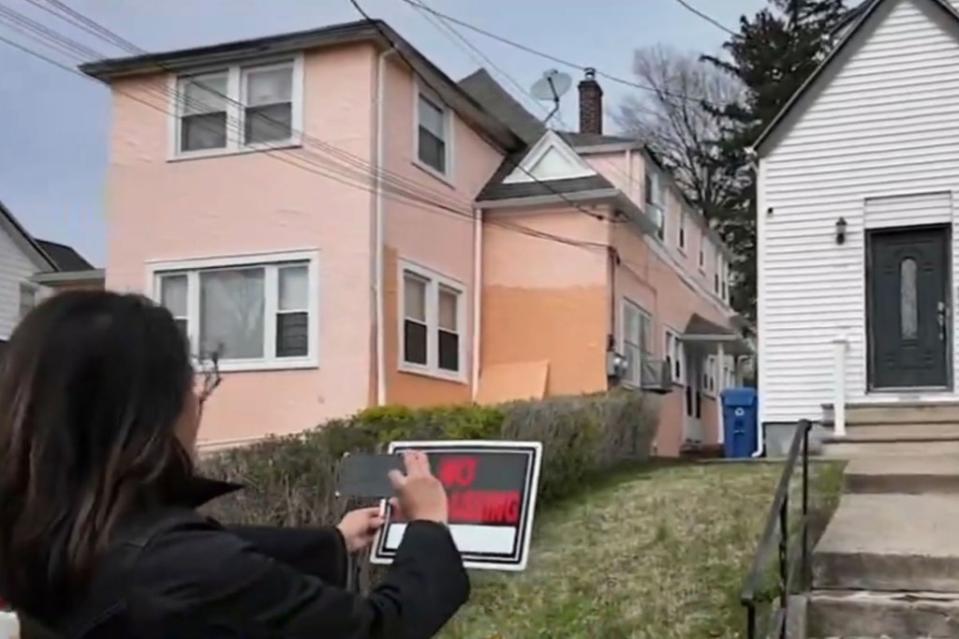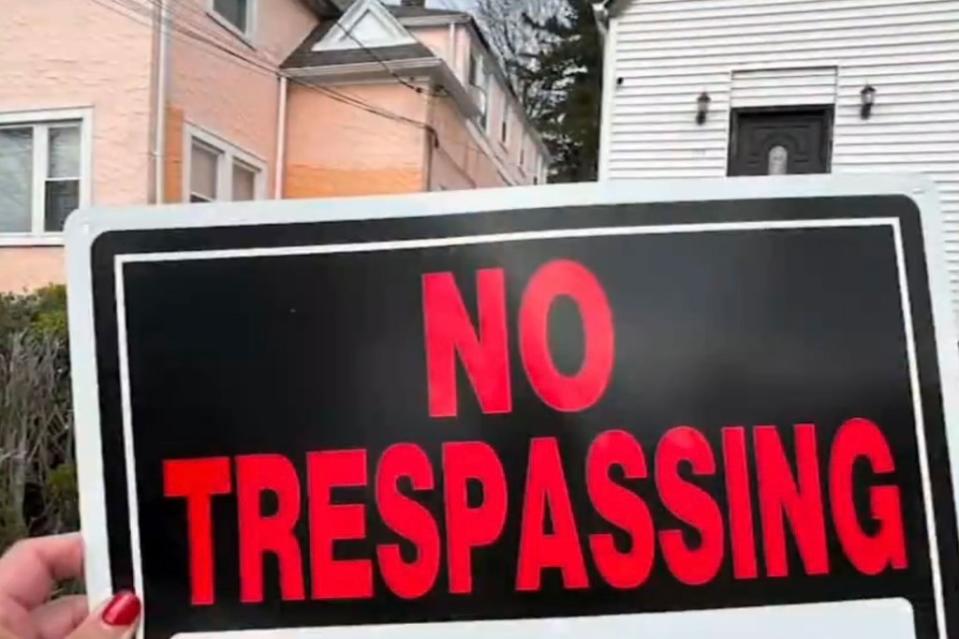New Yorkers encouraged to thwart potential squatters with flimsy ‘No Trespassing’ signs

New Yorkers’ best defense against squatters? A flimsy plastic sign that costs a few bucks.
Local news reporters encouraged homeowners to get themselves a “No Trespassing” sign to thwart potential squatters from moving in uninvited and taking control of their houses.
“This was $3.47 at Home Depot. It is a ‘No Trespassing’ sign,” ABC 7 Eyewitness News’ Nina Pineda said during a Thursday broadcast. “You can put this up on your front door, on your property line, somewhere you can see it from the street.
“But this is the catch — take a time-stamped picture of the sign … because what you want to prove to police is that the sign was up before the squatters moved in,” Pineda said, adding that home security cameras are another key tool to fight home invaders.

In New York City, people can claim “squatter’s rights” — the legal right to inhabit a home — after living there for just 30 days, even without proof of the owner’s permission.
The law — which was initially meant to protect long-term tenants from eviction — requires the property owner to take up the matter in the often backlogged housing court, rendering cops powerless in the interim.
The homeowner is legally barred from changing the locks, turning off utility services or removing the freeloaders’ belongings.

A series of high-profile squatting cases in the Big Apple and cities across the country are raising serious concerns about the existing law.
In one case, a Queens property owner was arrested and placed in handcuffs for changing the locks on her own home after a group of interlopers moved into the $1 million house that she inherited from her mother.
While New Yorkers are being told to arm themselves with cameras and plastic lawn signs, Florida Gov. Ron DeSantis signed into law Wednesday legislation that seeks to empower homeowners dealing with squatters.
The new law, which goes into effect July 1, gives police the power to quickly remove individuals from a home if they cannot produce paperwork, such as a lease, showing they live there.

Back in New York, state Assemblyman Jake Blumencranz (R-LI) has introduced a bill that seeks to clarify the legal definition of a tenant to exclude squatters. The bill defines squatters as trespassers, which would allow officers to remove them from properties.
The bill is gaining bipartisan support, though similar state legislation failed to become law 10 years ago.
Pineda also said homeowners should let their local police precinct know if their property will be vacant for an extended period of time.

